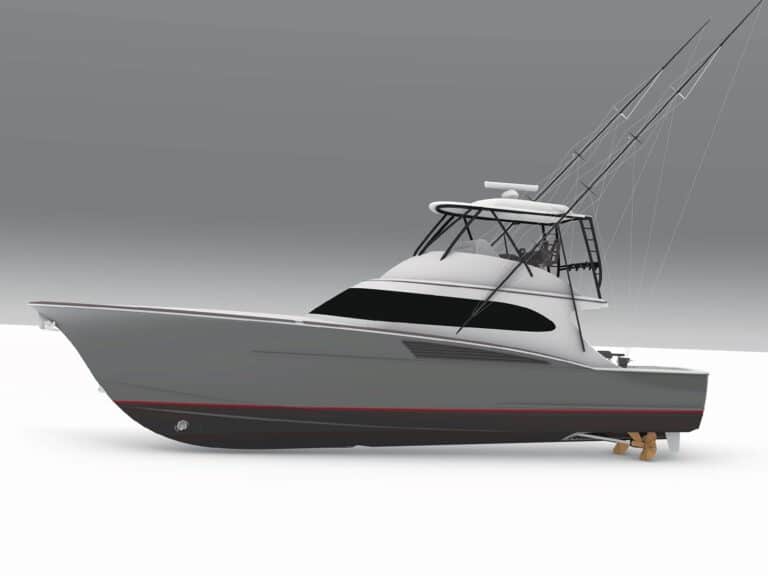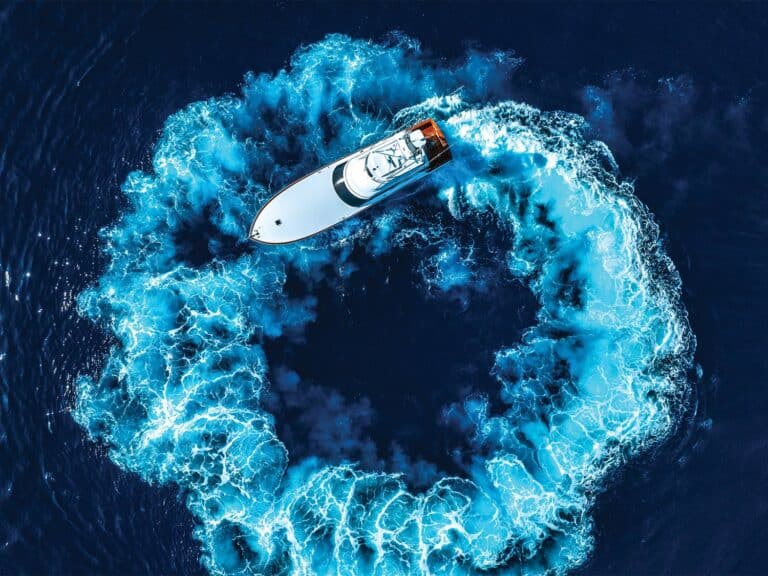When you’re offshore and waiting for your next bite, the cloak of isolation can be your best friend. But sometimes you can’t afford to be “dark” from your business or family for long stretches, so most captains opt for some type of satellite communication. There are a lot of options, but the trick is knowing what equipment you need and how to manage it.
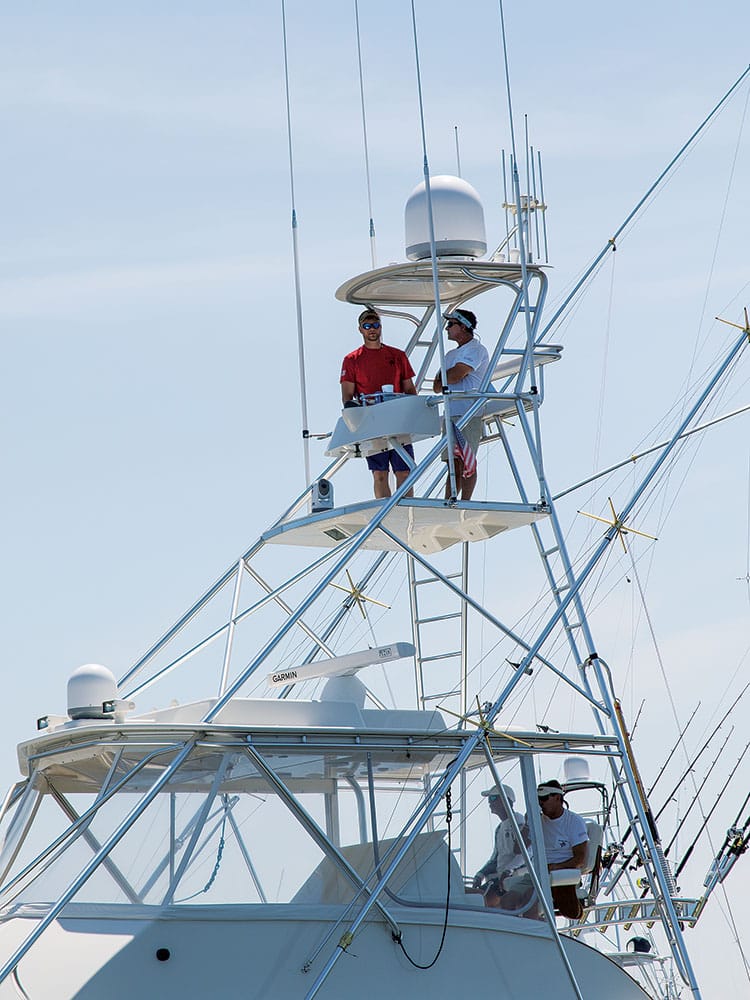
Will a Satellite Phone Do?
For some, a simple satellite phone like Globalstar’s GSP-1700 (about $500, plus service plan) is plenty. But the Globalstar GSP-2900 fixed phone system ($1,650) with ports for up to five regular household handsets gives plenty of onboard calling options. Even better, couple it with the Globalstar GSP 9600 data port ($180), and it becomes a wireless router for transmitting satellite data. The relatively inexpensive equipment has impressive coverage and is ideal for text email and faxes. But its fixed antenna is somewhat more limited on data access.
Increasingly, sport-fishing boats are connected via stabilized satellite-communications antennae and utilize services from either KVH or Intellian. Stabilization allows the antennae to align itself most directly with the satellite signal in spite of the rocking of the boat or its changing heading. When choosing these communications systems, you need to address four questions: where in the world you’ll need to access satellite data, how much data you will need to stream, and how fast a streaming rate will be necessary for your crew. And last, how large of an antenna can your vessel support?
Large Domes Are Most Efficient
Size matters. Satellite domes more than 1 meter in diameter are available from Intellian and KVH, and they provide the highest rate of data stream. Larger antennae are like larger pipes: The larger the pipe, the more bandwidth it can carry and the faster the speed. That’s a fair metaphor for large versus small stabilized antennae. But these brutes are often impractical for vessels under 80 feet, which is the majority of boats, for now, chasing blue marlin these days. The middle-size domes are about 24 inches, and they optimize mounting practicalities as well as the rate and quality of data streaming.
You can go smaller. For simple text emails, some skippers opt for a smaller option such as the KVH V3-IP ($16,995) with a 13-inch diameter. Intellian offers seven models with domes from 14 to 44 inches in diameter. Keep in mind: The smaller the dome, the slower the streaming. But all these systems provide voice and data over proprietary services with reasonable reliability.
The larger the antennae, the greater the throughput and the lower the cost of the data. That’s because it’s easier to push data through a larger antenna.
Paul Comyns, Intellian
Advertisement
Another advantage to larger antennae, according to Paul Comyns, of Intellian, is a lower cost of data on their providers. It goes back to the big-pipe metaphor.
“The larger the antennae, the greater the throughput and the lower the cost of the data,” Comyns says. “That’s because it’s easier to push data through a larger antenna.” With larger systems, you can quickly browse or even download a movie to a hard drive and watch it — though the cost of the data can be intimidating.
A 30-inch dome like the Intellian V65 (from $22,000, approximately) or the 24-inch KVH V7-IP ($26,995) are smaller and more-practical options, giving an optimum of bandwidth and mounting convenience. But if you can’t find a convenient mounting point for even a 14-inch dome, consider the TracPhone Fleet One by KVH. This option is only 11 inches and offers a slower gateway, but it might be the most practical data and voice solution on smaller sport-fishers.
Know Your Data Costs
When you buy satellite service, you’re paying for the bandwidth and speed at sea. At home, 20 mbps is a good streaming rate. At sea, 1 or 2 mbps is tops. And it can cost as much as $1,000 per gigabyte. “Update a website like CNN,” says Comyns, “and you’ve used 2 megabytes. Suddenly your browsing adds up to real money.”
So a key consideration for captains and owners is how to manage data. In port, most vessels are on cable Internet via Wi-Fi, or a remote marina Wi-Fi, if not cellular data. If you move away and the crew continues to use data, the Wi-Fi router could tap your satellite data. Horror stories abound of captains returning to port only to find a multi-thousand-dollar satcom bill in the mailbox a few days later.
KVH hardware is made in the U.S. and dedicated to its proprietary communications system. Its plans provide both high-speed data on smaller domes and data-monitoring capabilities via the myKVH portal. When any user gets close to their predesignated limit, the captain and crew are notified. Then access can be limited or data levels can be increased, depending on needs. It’s a great solution to solving those home-port data surprises.
Another precaution Comyns suggests is to turn off all automatic software-update functions on all devices that might connect to shipboard Wi-Fi. And unless you don’t mind the kids downloading their favorite Disney flick at $400, don’t share Netflix or YouTube passwords.
It’s important to make sure everyone knows what devices use data and how much they use. A simple text email is about 1 KB. Attach a document to it, and you add another 300 KB. And a smartphone photo can be anywhere from 1 MB to 24 MB, so stay on your toes when checking your email or sending images.
Satellite Communication Options
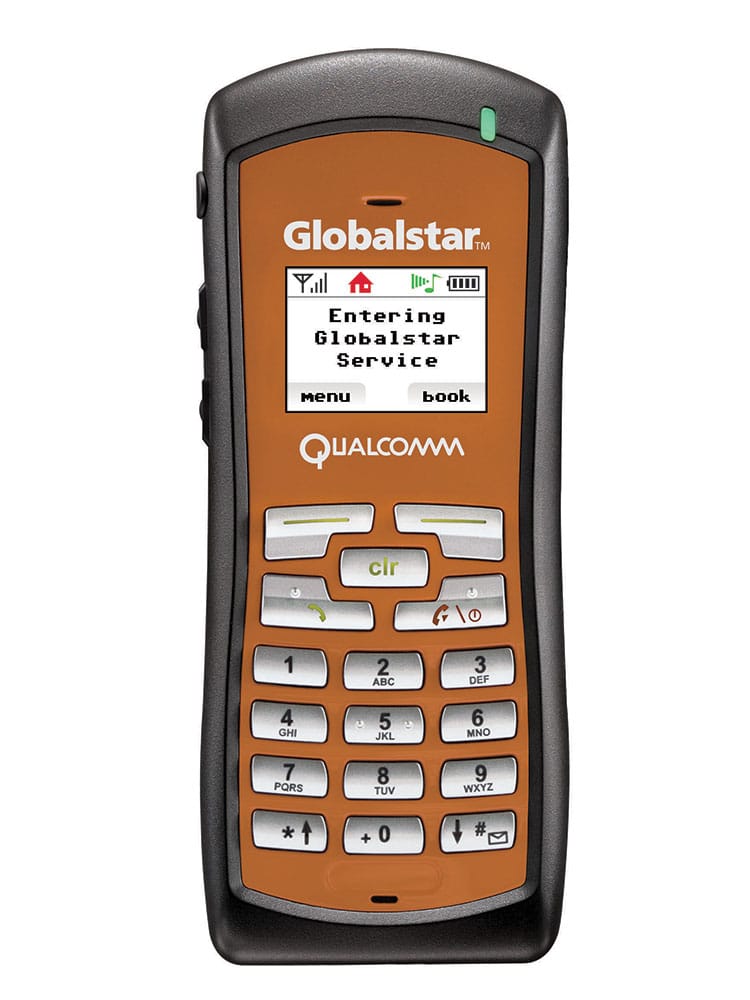
Globalstar’s GSP 1700 sat phone is a regular on marlin boats.
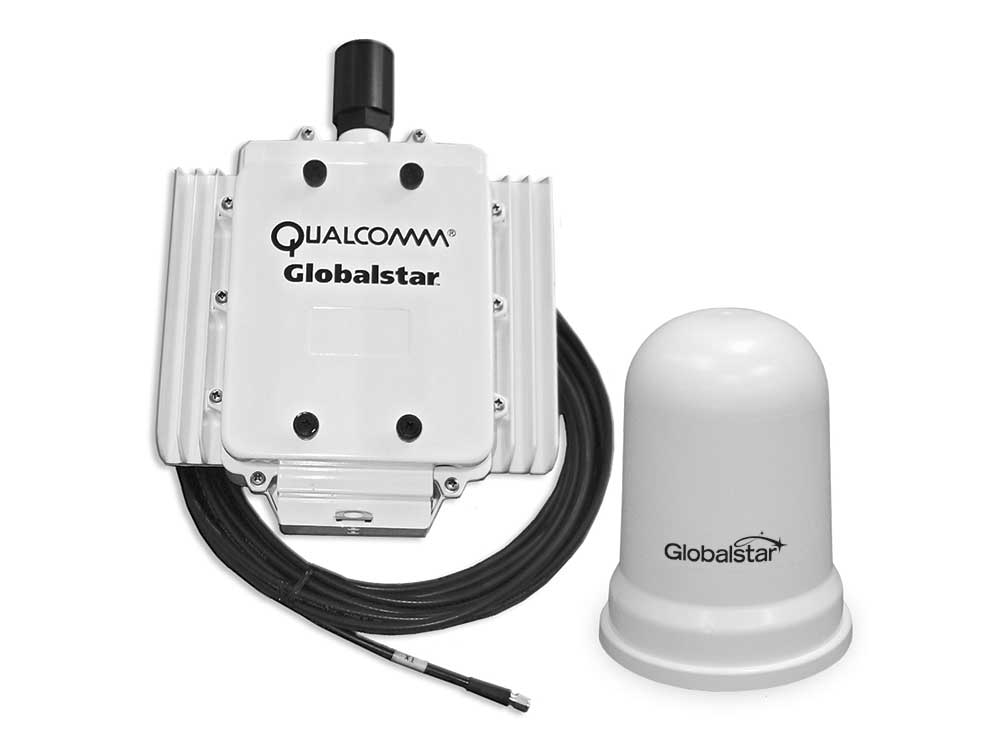
Globalstar’s GSP 2600 (far left) and the GSP 9600 dataport offer fixed phone voice and data streaming.
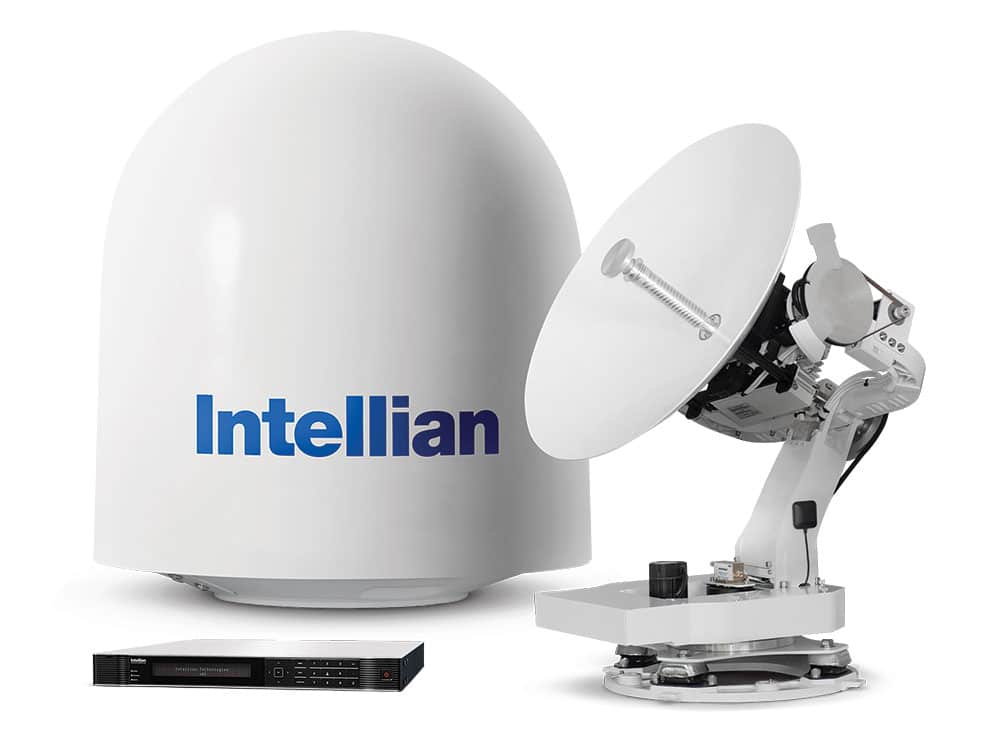
Intellian’s v65 is just one voice/data option among its domes from 14 to 60 inches.
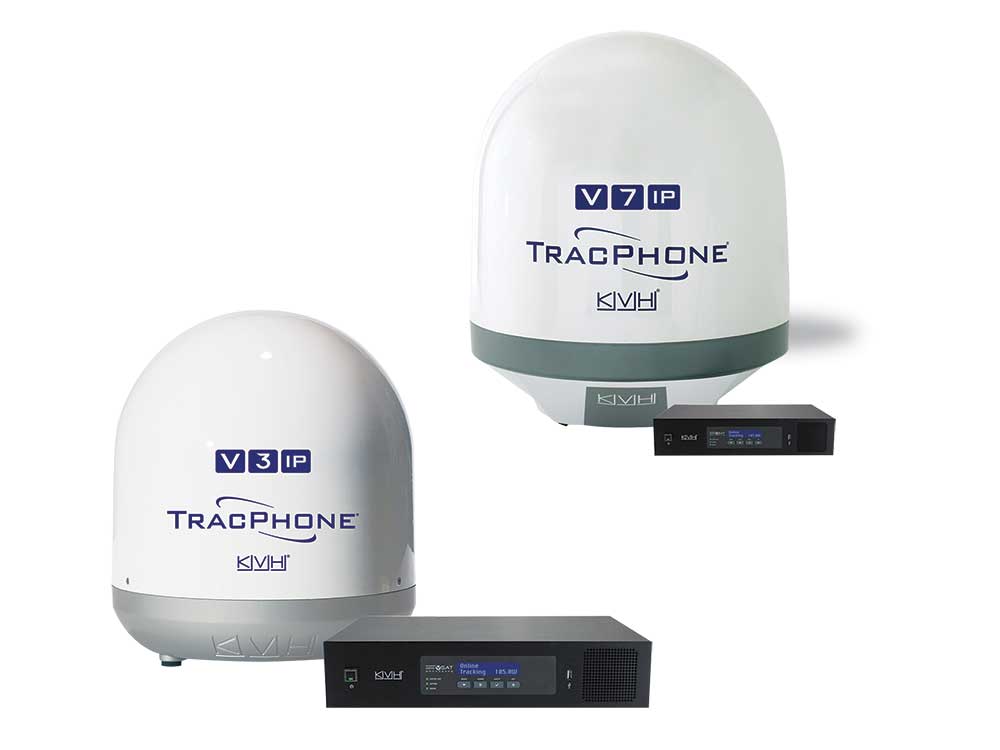
KVH options range from 15 to 60 inches.






